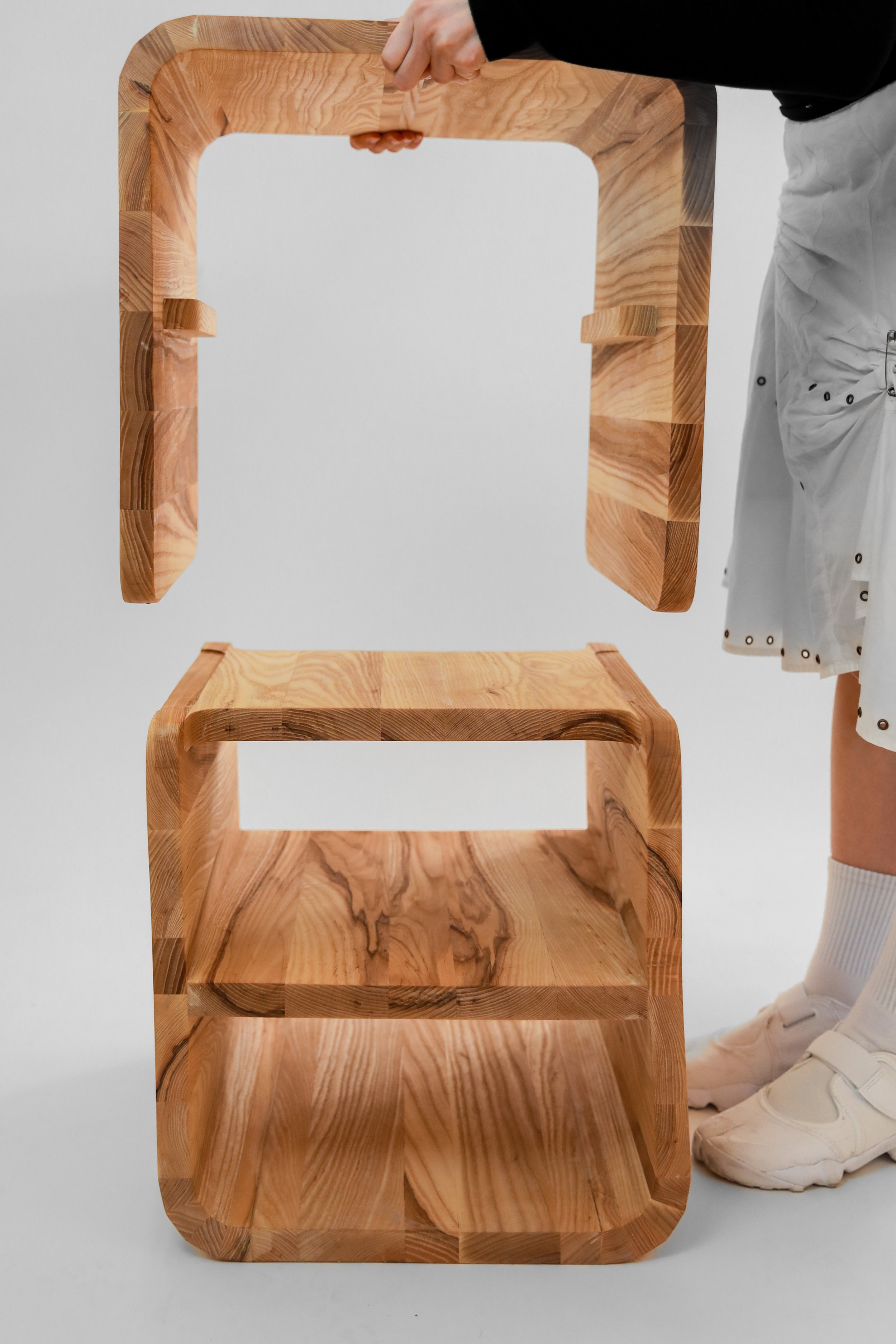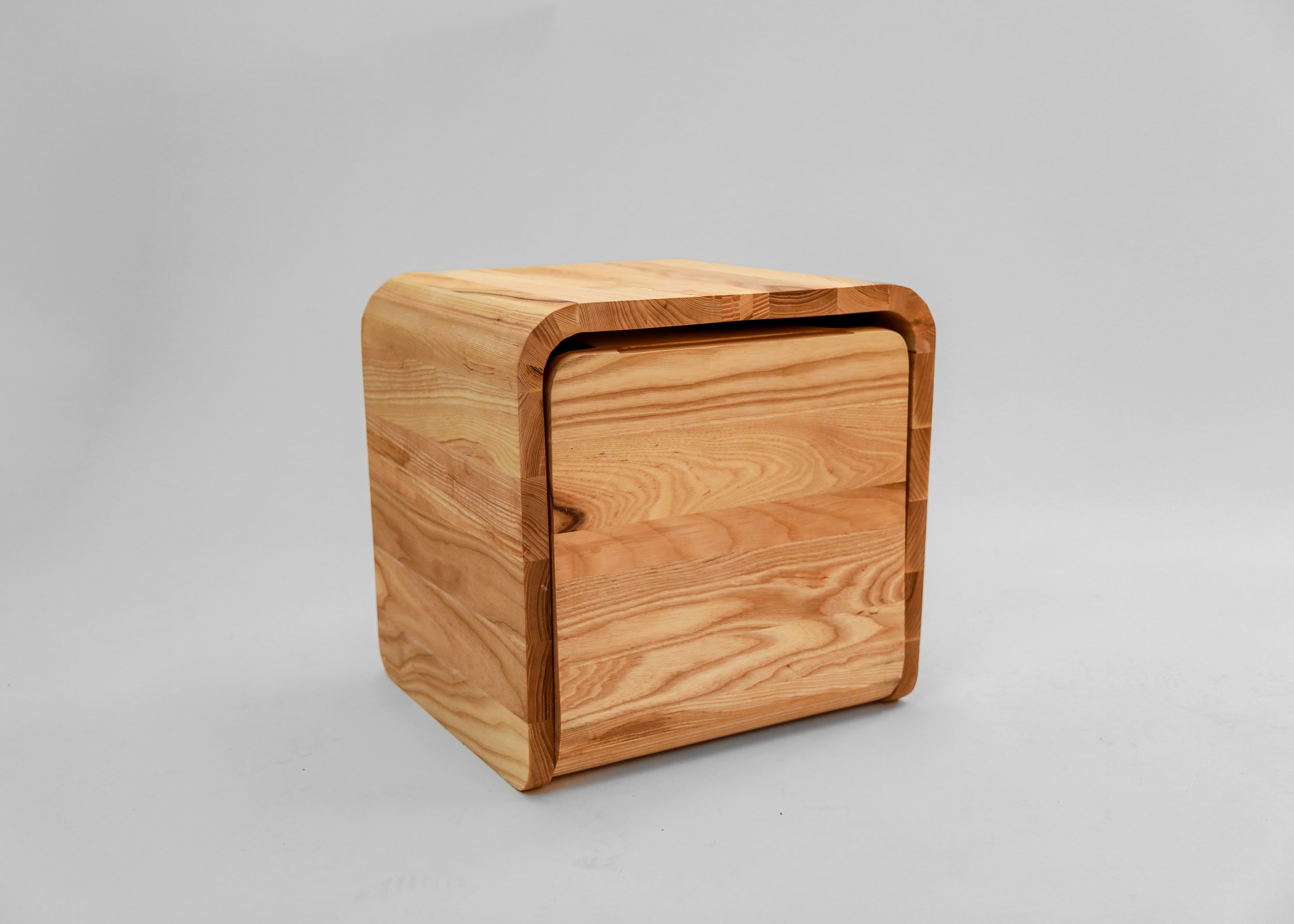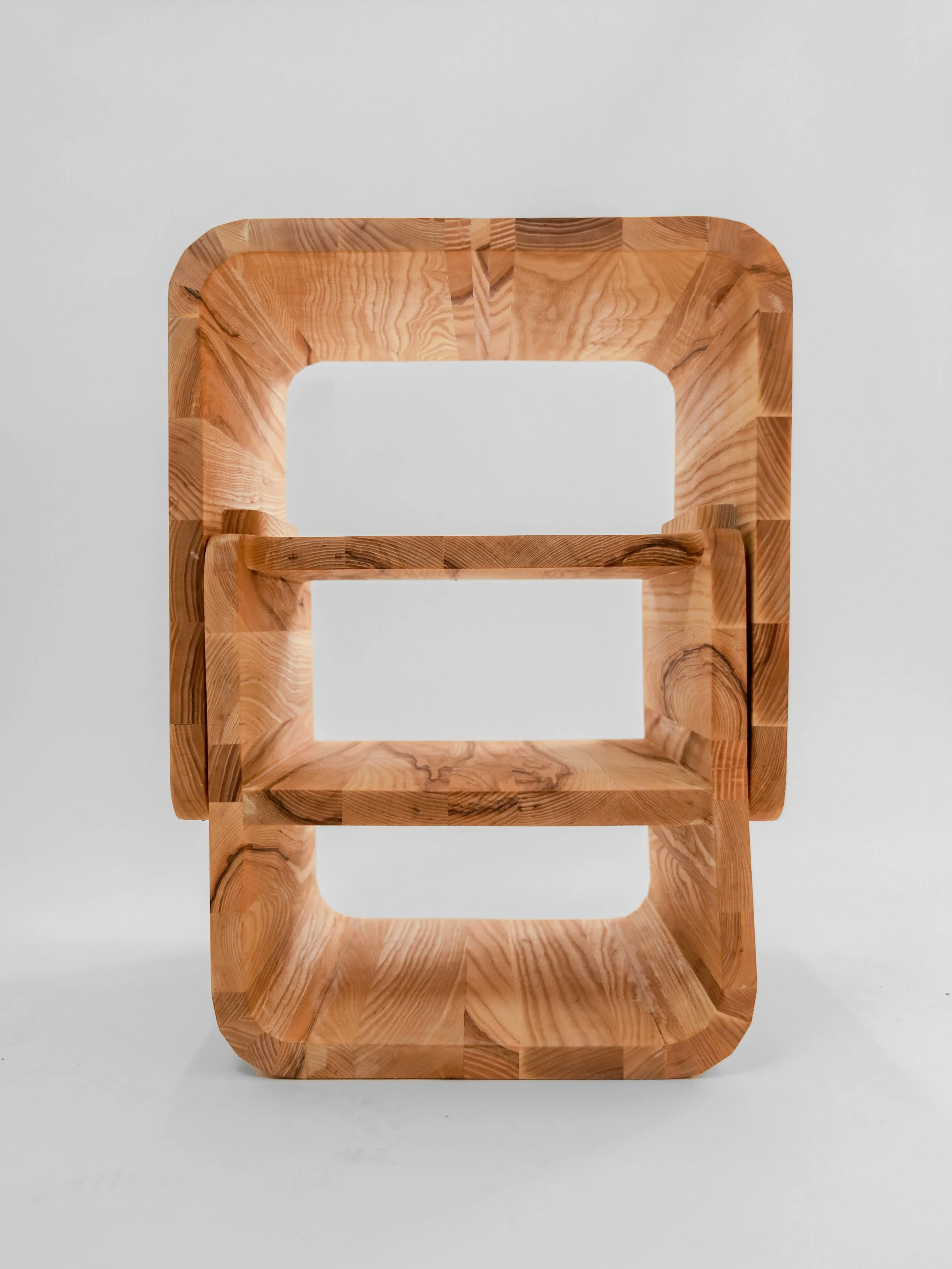sedraj@uoregon.edu
with Sedra Jones
Hideaway
Materials: Ash
The Hideaway end table combines seen and unseen storage so the user can choose when they want their items exhibited. The top piece can be rotated and raised to create a shelf or turned and lowered to create an inconspicuous box.



Why was it important to have two states of presentation for Hideaway?
Sedra Jones: When I first proposed the idea of doing an end table or storage device, I was really thinking about how people will put their stuff on display versus how they'll hide it away whenever they have guests over. Having seen versus unseen storage, and how that would look, and how a user would use that. That's kind of the idea that guided me through.
How did your design evolve through your process?
SJ: One of the big things that changed was when I was originally designing this, I was trying to have it on one plane so it slid up and down, but I was having a lot of trouble with the mechanics of that, so I had to change it to this like lift and turn method. Another thing was that I don't know a lot about woodworking, so I had a lot of trouble getting the curves in and couldn't really figure out a good way to do that, so instead of making it out of real wood, it was originally MDF with a veneer over it, and then I found a process later on and it became what my original vision was.
What was the biggest challenge you faced when designing this product?
SJ: The most challenging thing was that I didn't have the experience necessary for knowing how to build this, so when I designed it, it wasn't informed by the building process. I had to change a lot of things to make it so that it could be made how I designed it.
How would you like to improve this project moving forward?
SJ: The main thing that I would like to improve is the ease of deployability. I'd like it to be easier for the user to change between display mode and hidden mode.
Sedra Jones
sedraj@uoregon.edu


